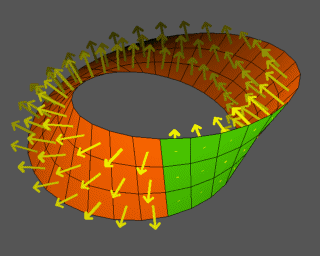|
I think what we want to do is -- fold this information and theme group into the Core Vocabulary group, while starting to consider an assembling sequence
***
The basic terms and primary vocabulary of the Closed Loop model of epistemology and ontology can be mapped to the unit strip, which is the foundation for all definitions.
The Closed Loop model is a systematic interpretation of this form, which opens to its full power and meaning under the twist, shown in the animated graphic in the header.


Every definition is created by boundaries.
Every category is created by boundaries.
Boundaries are created by stipulation (human intention).
Boundaries create intervals.
Each term needs its own diagram.
|








